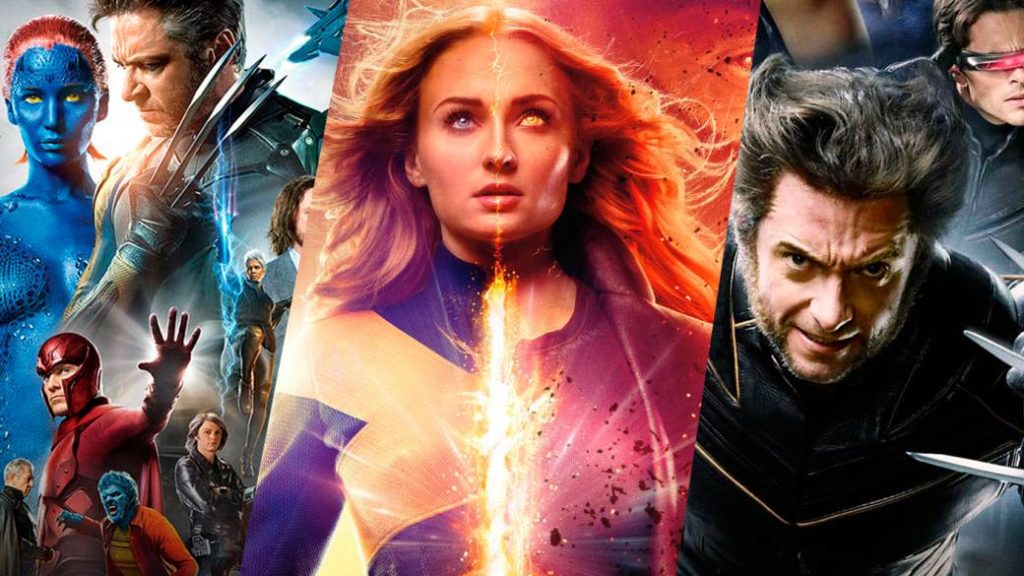

The movie ends with Jean as the Phoenix flying off into the sky, Xavier leaving the school and joining Magneto off on their own adventure, and Beast taking over the school, renamed The Jean Grey Institute of Higher Learning. The movie also features the X-Men as a more classic superhero team known by the public, a stark contrast to the original timeline and also something future films will explore in side stories. Interestingly, the previous film established that Jean Grey already had the Phoenix inside her, but now just encounters it for the first time. Set nine years after X-Men: Apocalypse, X-Men: Dark Phoenix is another attempt at doing the Dark Phoenix storyline from the comics, including introducing cosmic elements into the franchise while also repeating a lot of plot points from X-Men: The Last Stand. The after-credit moment of the end scene, featuring the Essex Corporation collecting DNA samples from Wolverine's attack in his new timeline origin, then sets the stage for films like Logan, Deadpool 2, and New Mutants later in the timeline.
Xmenu in order full#
In X-Men: The Last Stand, it is revealed that Xavier tried to suppress the Phoenix in Jean, whereas this younger incarnation learned the mistake his older counterpart did not and tells Jean to fully embrace her power, bringing everything full circle and setting up a new host of adventures, one that will be similar to the previous films but also different. This is most evident in the ending, when Xavier in this timeline does what his older version does not. This allows them to stick close to those portrayals but chart new paths for them given the new timeline.

The film very much embraces the new timeline, introducing younger versions of Cyclops, Jean Grey, Storm, Angel, and Nightcrawler, who were all seen in the previous trilogy. The film's central plot focuses on the ancient mutant Apocalypse being awoken in the 1980s, and his assemblage of four horsemen to take over the world unless the X-Men stop him. X-Men Apocalypse takes place in the new timeline set by X-Men: Days of Future Past and 10 years after in 1983. The film's epilogue, with Wolverine waking up in a brighter future, takes place in the new timeline, hinting at stories in the two following films: X-Men Apocalypse and X-Men: Dark Phoenix. Yet everything in the previous movies has to happen in order to lead to Wolverine going back in time. Once Wolverine travels back in time, he begins to create a new branch in reality, and once he meets Xavier and Beast, the timeline begins to splinter off into the new timeline which the following films will pick up. The future scenes are all following the events of all the previous X-Men films listed above. Related: Explained: Didn't Professor X Die in X-Men: The Last Stand?ĭays of Future Past thus creates two timelines. The film follows two timelines, one in 2023 where mutants have been hunted to the brink of extinction by the Sentinels, and this forces them to make the last hope of sending Wolverine back in time to 1973 to change the future.

X-Men: Days of Future Past is where the timeline becomes both tricky and more clear in some instances.

This is the chronological order of the X-Men film series' confusing timeline. They will face countless genocides, change the course of their fates, and in the end light the beacon of hope for a new generation.
Xmenu in order series#
The series starts and propels forward, only to go back and branch out, but tells the same story of the X-Men's struggle to fight for and against a world that wants to destroy them. However, there is a way to watch the 13 X-Men movies in order following one timeline and set of events. The X-Men franchise has an interesting continuity, as oftentimes the movies contradict one another, and the presence of time travel, multiple timelines, and different versions of the characters can make for a confusing watch for those wanting to see the story movies in chronological order, simplified. The X-Men series had ups and downs in terms of quality that, by the time the franchises ended with X-Men: Dark Phoenix and New Mutants, it went out with less of a bang and more of a whimper (or rather, a big bomb). Yet after the MCU started and a series of poor reactions to X-Men films, the franchise struggled, and while it found its footing for a bit it never quite reached the same heights as it once had. The first X-Men helped kick-start the comic book boom that made superhero movies so popular, and each film grew to be bigger and more profitable. Before the MCU, the X-Men movies were some of the biggest superhero films in the world.


 0 kommentar(er)
0 kommentar(er)
